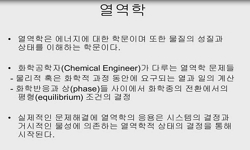Atmospheric bulk (wet and dry) samples were monthly collected in an urban environment (Daeyeon-dong) of Busan over a year, to assess the deposition flux and seasonality of dioxin-like polychlorinated biphenyls (DLPCBs) using stainless steel pots. Depo...
http://chineseinput.net/에서 pinyin(병음)방식으로 중국어를 변환할 수 있습니다.
변환된 중국어를 복사하여 사용하시면 됩니다.
- 中文 을 입력하시려면 zhongwen을 입력하시고 space를누르시면됩니다.
- 北京 을 입력하시려면 beijing을 입력하시고 space를 누르시면 됩니다.

Deposition flux of dioxin-like polychlorinated biphenyls (DLPCBs) in urban environment of Busan
한글로보기https://www.riss.kr/link?id=A45041868
-
저자
Moon, Hyo-Bang (Marine Environment Management Division, National Fisheries Research & Development Institute) ; Lee, Su-Jeong (Marine Environment Management Division, National Fisheries Research & Development Institute) ; Choi, Hee-Gu (Marine Environment Management Division, National Fisheries Research & Development Institute) ; Ok, Gon (Faculty of Earth Environmental Sciences, Pukyong National University)
- 발행기관
- 학술지명
- 권호사항
-
발행연도
2004
-
작성언어
English
- 주제어
-
KDC
539.9
-
등재정보
KCI등재
-
자료형태
학술저널
- 발행기관 URL
-
수록면
469-478(10쪽)
- 제공처
- 소장기관
-
0
상세조회 -
0
다운로드
부가정보
다국어 초록 (Multilingual Abstract)
Atmospheric bulk (wet and dry) samples were monthly collected in an urban environment (Daeyeon-dong) of Busan over a year, to assess the deposition flux and seasonality of dioxin-like polychlorinated biphenyls (DLPCBs) using stainless steel pots. Deposition fluxes of DLPCBs in bulk samples were determined using high resolution gas chromatography coupled to high resolution mass spectrometry (HRGC/HRMS). Particle deposition fluxes in the urban environment varied from 23 to 98 g/m²/year (mean 41 g/m²/year). DLPCB deposition fluxes in atmospheric bulk samples ranged from 0.09 to 0.77 ng-TEQ/m²/year (mean 0.35 ng-TEQ/m²/year). Seasonal atmospheric deposition fluxes of DLPCBs were high in winter and low in summer. Atmospheric deposition fluxes of particles and DLPCBs in this study were comparable to or slightly lower values than those of different locations in the world. Monthly DLPCB profiles in deposition bulk samples were similar over a year. Non-ortho PCBs were higher contributions to the total DLPCBs fluxes than mono-ortho PCBs. In particular, PCB 126 had the highest concentrartion (>75%) in all deposition samples, followed by PCB 169 and PCB 156. A highly positive correlation was found among the deposition fluxes of DLPCB species, suggesting the possibility of that the DLPCB contamination originated from one source. The deposition fluxes of DLPCBs were not significantly correlated with temperature and the amount of precipitation even though the summer season with the highest temperature and the largest amount of precipitation showed the lowest DLPCB deposition flux.
동일학술지(권/호) 다른 논문
-
- 한국환경과학회
- Kim, Yong-Bum
- 2004
- KCI등재
-
- 한국환경과학회
- Gong, Yeong
- 2004
- KCI등재
-
- 한국환경과학회
- Hyun, Sangmin
- 2004
- KCI등재




 ScienceON
ScienceON DBpia
DBpia







